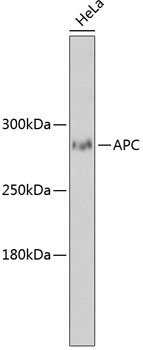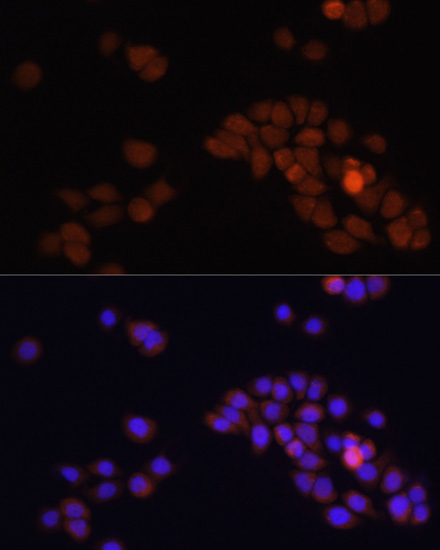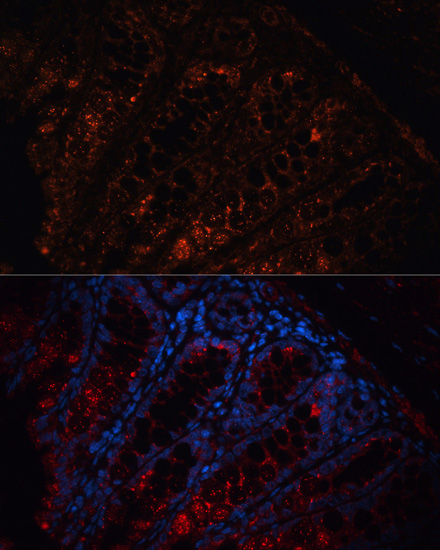-
Product Name
APC Polyclonal Antibody
- Documents
-
Description
Polyclonal antibody to APC
-
Tested applications
WB, IHC, IF
-
Species reactivity
Human, Mouse, Rat
-
Alternative names
APC antibody; BTPS2 antibody; DP2 antibody; DP2.5 antibody; DP3 antibody; GS antibody; PPP1R46 antibody; adenomatous polyposis coli protein antibody
-
Isotype
Rabbit IgG
-
Preparation
Antigen: Recombinant fusion protein containing a sequence corresponding to amino acids 2544-2843 of human APC (NP_000029.2).
-
Clonality
Polyclonal
-
Formulation
PBS with 0.02% sodium azide, 50% glycerol, pH7.3.
-
Storage instructions
Store at -20℃. Avoid freeze / thaw cycles.
-
Applications
WB 1:500 - 1:2000
IHC 1:50 - 1:200
IF 1:50 - 1:200 -
Validations

Western blot - APC Polyclonal Antibody
Western blot analysis of extracts of HeLa cells, using APC antibody at 1:3000 dilution.Secondary antibody: HRP Goat Anti-Rabbit IgG (H+L) at 1:10000 dilution.Lysates/proteins: 25ug per lane.Blocking buffer: 3% nonfat dry milk in TBST.Detection: ECL Enhanced Kit .Exposure time: 90s.

Immunofluorescence - APC Polyclonal Antibody
Immunofluorescence analysis of HT-29 cells using APC antibody at dilution of 1:100. Blue: DAPI for nuclear staining.

Immunofluorescence - APC Polyclonal Antibody
Immunofluorescence analysis of mouse colon using APC antibody at dilution of 1:100. Blue: DAPI for nuclear staining.
-
Background
Tumor suppressor. Promotes rapid degradation of CTNNB1 and participates in Wnt signaling as a negative regulator. APC activity is correlated with its phosphorylation state. Activates the GEF activity of SPATA13 and ARHGEF4. Plays a role in hepatocyte growth factor (HGF)-induced cell migration. Required for MMP9 up-regulation via the JNK signaling pathway in colorectal tumor cells. Acts as a mediator of ERBB2-dependent stabilization of microtubules at the cell cortex. It is required for the localization of MACF1 to the cell membrane and this localization of MACF1 is critical for its function in microtubule stabilization.
Related Products / Services
Please note: All products are "FOR RESEARCH USE ONLY AND ARE NOT INTENDED FOR DIAGNOSTIC OR THERAPEUTIC USE"
